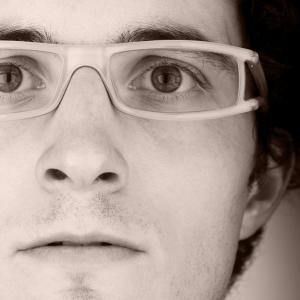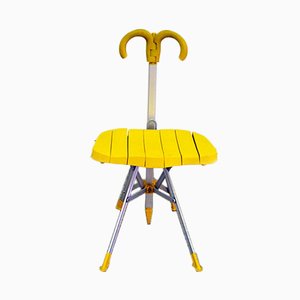Designer Jens Praet interviews his hero, the legendary Gaetano Pesce
Tête-à-Tête
-
Gaetano Pesce
Photo courtesy of Gaetano Pesce
-
Ocean Table (2012)
Photo © John Rohrer; courtesy of Gaetano Pesce
-
Ocean Table (2012)
Photo © John Rohrer; courtesy of Gaetano Pesce
-
Lake Table (2012)
Photo © John Rohrer; courtesy of Gaetano Pesce
-
Lake Table (2012)
Photo © John Rohrer; courtesy of Gaetano Pesce
-
Lake Table (2012)
Photo © John Rohrer; courtesy of Gaetano Pesce
-
Lagoon Table (2012)
Photo © John Rohrer; courtesy of Gaetano Pesce
-
Lagoon Table (2012)
Photo © John Rohrer; courtesy of Gaetano Pesce
-
Pond Table (2012)
Photo © John Rohrer; courtesy of Gaetano Pesce
-
Pond Table (2012)
Photo © John Rohrer; courtesy of Gaetano Pesce
-
Pond Table (2012)
Photo © John Rohrer; courtesy of Gaetano Pesce
-
Pond Table (2012)
Photo © John Rohrer; courtesy of Gaetano Pesce
-
Puddle Table (2012)
Photo © John Rohrer; courtesy of Gaetano Pesce
-
Puddle Table (2012)
Photo © John Rohrer; courtesy of Gaetano Pesce
-
Puddle Table (2012)
Photo © John Rohrer; courtesy of Gaetano Pesce
-
River Table (2012)
Photo © John Rohrer; courtesy of Gaetano Pesce
-
River Table (2012)
Photo © John Rohrer; courtesy of Gaetano Pesce
-
River Table (2012)
<em>© John Rohrer; courtesy of Gaetano Pesce</em>
-
America Table
Photo courtesy of Gaetano Pesce
-
Jens Praet at work
Photo courtesy of Studio Jens Praet
-
Inverso (2011)
Photo © Claudio Sabatino; courtesy of Studio Jens Praet
-
Processus Table (2012)
Photo © Beccali Carlo; courtesy of Studio Jens Praet
-
Processus Table (2012)
Photo © Beccali Carlo; courtesy of Studio Jens Praet
-
Shredded Collection Bench (2011)
Photo © Kaitey Whitehead; courtesy of Studio Jens Praet
-
Shredded Collection Bench (2011)
Photo © Kaitey Whitehead; courtesy of Studio Jens Praet
Tête-à-Tête is a new series based on a very simple premise: conversations between rising design stars and their heroes. For the first installment, we approached one of our favorite emerging designers, the boldly talented Jens Praet. We posed the following question to him: “Jens, if you could speak with any one of your heroes (design or otherwise—preferably living), whom would you choose?”
Without hesitation, he replied, “Gaetano Pesce.” Praet first became aware of Pesce while he was still a child, and, as he explains, the iconic experimental designer certainly made an impact: “He was my first design hero, and he still is. As a kid, I visited Pesce's solo show at the Pompidou in Paris, and I remember saying to myself, as little as I was: ‘I want to do this.’”
So we reached out to the legendary Italian-born, New York-based designer, architect, and artist, who was more than happy to oblige. Check out their interview below.
Enjoy!
Jens Praet: Given that you work in art, design, and architecture, what elements are consistent in your creative approach to every project, regardless of discipline?
Gaetano Pesce: Function is very important, [as well as] expressing the opinion of the author, which could be political, religious, philosophical, or existential.
JP: I see recurring themes in your work: landscapes and nature, love and empathy. Can you tell me why you are so attracted to these ideas?
GP: I believe I cannot answer why I am so attracted to these ideas, because, as you know, ideas come without reasons. Or, they have reasons, but we don’t exactly know what they are.
JP: If you could have been born in another century, which one would you choose and why?
GP: I would choose the Renaissance because it was a multidisciplinary period; though I believe our time is much better.
JP: You are a true maestro in so many creative arenas, but I’m especially partial to your work with resins and silicones. When and why did you start exploring these materials?
GP: I started working with resin and silicone when I was 21 years old. At the time, I realized that I hadn’t learned too much about contemporary materials. So, in order to understand those materials better, I had to go to big chemical companies. I asked to visit them and see their “discoveries.” In this way, I realized that traditional materials were almost nothing comparing to the materials of our time.
JP: It seems there is a renewed interest in craft production these days. Why do you think this is the case?
GP: I consider the revival of craft production a postmodern and nostalgic movement . . . I am not interested in craft production. I am interested in production for the future, done with technology. Craft, in my opinion, is a way of going back in time, and I am not interested in that.
JP: Not long ago, I saw your America Table at Design Miami. Why did you choose to work with the typographic form? What does the form symbolize for you?
GP: That table was a tribute to [Thomas] Jefferson. Jefferson was really writing the constitution, so in considering how to represent the word constitution, I thought the best way was to use letters.
JP: Six Tables on Water, your recent project for David Gill Galleries, is amazing. To me, this is a clear example of functional art pieces; they each have beautifully crafted details but still remain functional. What was the inspiration behind these pieces?
GP: Thank you. My inspiration is that I consider design as a way to talk about reality. The commentary here is that some people use water with respect; some do not. And so the tables are talking about that.
JP: What is a good day for you?
GP: A good day for me is one that doesn’t repeat the day before. And if I can have a new experience, that is a very good day.
JP: My first encounter with your work, as a child, was at Gallery Mourmans in Knokke (Belgium). Later I saw your work again at a show in Centre Pompidou in Paris, and I remember saying to myself, “I want to do this.” I would like to know whether you have any advice for me and other creatives just starting out?
GP: My advice is to be curious. And try not to repeat anything in terms of both the time of your life and in terms of work. Not repeating yourself is the best way to do something innovative.
JP: Thank you!
GP: Thank you.
This interview has been edited and condensed.
Introductory text by Anna Carnick
-
Interview by
-
Jens Praet
Jens is a Belgium-born, Tuscany-based designer, whose work cleverly combines the old with the new. One of L’AB’s favorites, he interviewed design legend Gaetano Pesce.
-


























 Gaetano Pesce
Courtesy of Gaetano Pesce
Gaetano Pesce
Courtesy of Gaetano Pesce

